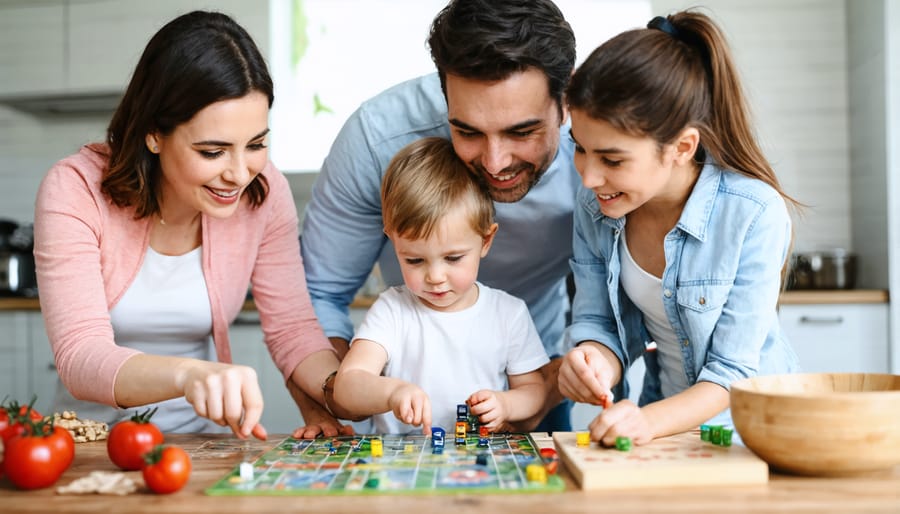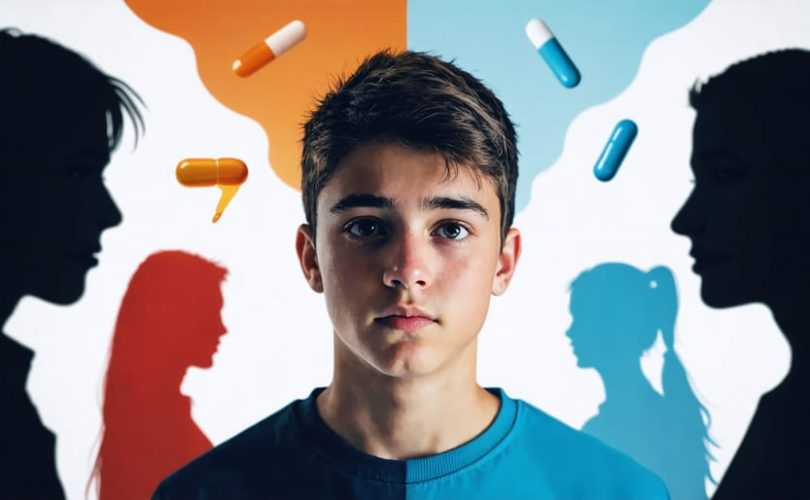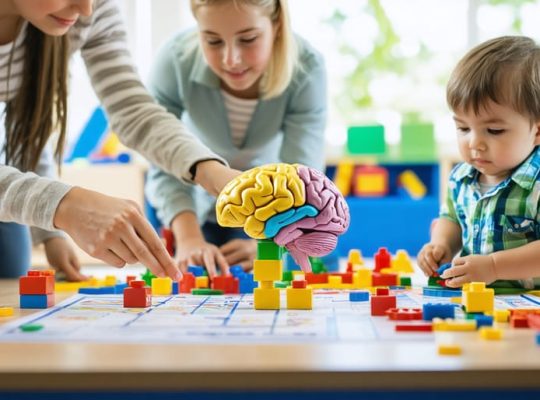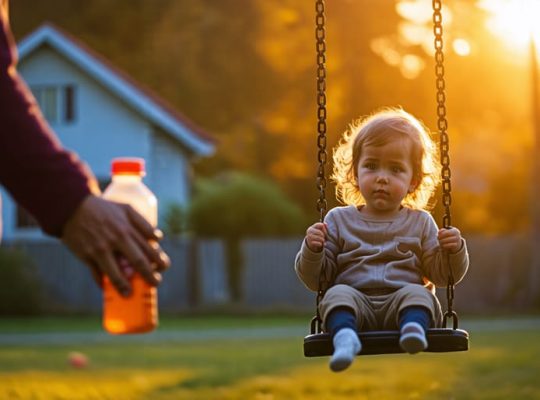The conversation about drugs will likely reach your child before you do – and that reality keeps many parents awake at night. As a parent, you’re not just competing with peer pressure; you’re racing against a complex web of social media influences, evolving drug culture, and the natural teenage desire to fit in. Understanding how to protect your child from substance abuse starts with acknowledging that drug peer pressure today looks drastically different from what we experienced growing up.
Gone are the days when a simple “just say no” would suffice. Today’s youth face subtle, persistent pressure through social media, online communities, and even seemingly innocent social gatherings. This pressure doesn’t always come in the form of direct offers – it often manifests as normalized behavior in social media posts, casual conversations about weekend activities, or the fear of missing out on social experiences.
What makes this challenge particularly daunting is its ability to reach children in spaces parents can’t always monitor – through private messages, closed social media groups, and during ordinary school interactions. But while the landscape may seem overwhelming, parents aren’t powerless in this crucial fight for their children’s wellbeing.
Understanding Drug Peer Pressure in Children’s Lives

Direct vs. Indirect Pressure
Children typically face two distinct types of drug-related peer pressure: direct and indirect. Direct pressure involves explicit invitations or challenges to try drugs, often accompanied by statements like “Don’t be scared” or “Everyone’s doing it.” These face-to-face encounters can be particularly stressful for young people who aren’t prepared to respond.
Indirect pressure, while more subtle, can be equally powerful. This might include being surrounded by peers who use drugs, seeing drug use glamorized on social media, or feeling left out of social groups where drug use is common. Many children report feeling pressured to experiment with drugs simply to fit in or appear “cool,” even when no one directly asks them to participate.
As one school counselor notes, “Many students tell me they feel more influenced by what they think others expect of them than by actual peer confrontations.” Understanding these different forms of pressure helps parents and educators provide more targeted support. For instance, role-playing can help children practice responding to direct pressure, while building self-esteem and strong values can help them resist indirect influences.
Age-Specific Risk Factors
Drug peer pressure manifests differently across age groups, with each developmental stage presenting unique challenges. In middle school (ages 11-13), children often face their first exposure to substances through older siblings or peers trying to appear “mature.” The pressure typically stems from curiosity and the desire to fit in with specific social groups.
During high school years (14-18), the dynamics become more complex. Teenagers face increased pressure at parties, social gatherings, and through social media’s influence on substance use. This age group particularly struggles with direct peer pressure (“Come on, just try it”) and indirect pressure (feeling left out when others are using substances).
Young adults (18-21) often encounter pressure in college or work environments, where substance use might be normalized as a stress relief method or social lubricant. The pressure here tends to be more subtle but persistent, often disguised as “adult” social activities or workplace culture.
Understanding these age-specific patterns helps parents and caregivers provide targeted support and develop age-appropriate prevention strategies. Remember that while the nature of peer pressure evolves, the need for open communication and support remains constant across all age groups.
Warning Signs Your Child Is Experiencing Drug Peer Pressure
Behavioral Changes
When children face drug peer pressure, their behavior often changes in noticeable ways. As parents and caregivers, being aware of these shifts can help you identify when your child might be struggling. Watch for sudden changes in their friend group or reluctance to introduce new friends to family members. Your child might also become more secretive about their activities or start breaking curfew.
Changes in academic performance, such as dropping grades or skipping classes, can be red flags. You might notice mood swings, increased irritability, or withdrawal from family activities they once enjoyed. The impact of substance abuse often manifests in declining personal hygiene, changes in sleep patterns, or unexplained need for money.
Remember, these changes don’t automatically mean your child is using drugs, but they warrant attention and open conversation. Look for clusters of these behaviors rather than isolated incidents. You might notice changes in their language, using new slang terms related to drugs, or becoming defensive when substance use is discussed. Physical signs like bloodshot eyes, unusual smells on breath or clothing, or frequent use of eye drops can also indicate potential substance use under peer pressure.
Social Pattern Changes
One of the earliest signs of drug peer pressure often appears in changing social patterns. Parents may notice their child suddenly disconnecting from long-term friends and forming new relationships with unfamiliar peers. These new friendships might seem intense and exclusive, developing rapidly while old friendships fade away.
Watch for unexplained changes in social activities. Your child might start avoiding family gatherings or structured after-school activities they previously enjoyed. Instead, they may prefer spending time with their new friend group in less supervised settings or locations they’re reluctant to discuss.
Communication patterns often shift as well. You might notice your child being secretive about their phone conversations, switching to new messaging apps, or using unfamiliar slang terms. They may become defensive when asked about their whereabouts or new friends.
Weekend and evening activities might change dramatically. Your child might start requesting to attend more parties or sleepovers with unfamiliar hosts. They may return home at unusual hours or make excuses to leave the house unexpectedly.
Remember, while these changes don’t automatically indicate drug pressure, they warrant attention and open conversation. Maintaining a supportive, non-judgmental approach is crucial when discussing these changes with your child.
Building Your Child’s Resistance to Peer Pressure

Communication Strategies
Open, honest communication is your most powerful tool in helping your child resist drug peer pressure. Start conversations early and maintain them regularly, creating a safe space where your child feels comfortable sharing their concerns without fear of judgment or punishment.
When discussing drugs and peer pressure, use active listening techniques. Let your child express their thoughts and feelings while showing genuine interest in their perspective. Avoid lectures or harsh reactions, as these can shut down communication channels.
Role-playing can be particularly effective in preparing your child for real-life situations. Practice different scenarios together, helping them develop and rehearse responses to peer pressure. Simple phrases like “No thanks, I’m not interested” or “I need to go – my parents are waiting” can give them confidence in challenging situations.
Share age-appropriate personal experiences if you have them, as this can help normalize their struggles and show that you understand their challenges. Be sure to emphasize the positive outcomes of making healthy choices.
Establish a code word or phrase your child can use when they need help getting out of an uncomfortable situation. This gives them an escape route without facing social embarrassment. For example, they could text you “I’m not feeling well” as a signal that they need you to pick them up.
Remember to regularly reinforce that they can always come to you for help, no matter the situation. This assurance can make the difference between a child seeking help or giving in to peer pressure.
Building Self-Confidence
Building a strong foundation of self-confidence in your child is one of the most effective ways to help them resist drug peer pressure. When children feel secure in themselves and their decisions, they’re better equipped to stand firm in challenging situations.
Start by regularly acknowledging your child’s achievements, no matter how small. This isn’t about empty praise, but genuine recognition of their efforts and progress. Whether it’s improving at a sport, helping around the house, or showing kindness to others, celebrate these moments with specific feedback.
Encourage your child to pursue their interests and develop their talents. When children excel in areas they’re passionate about, they develop a stronger sense of identity and self-worth. This could be through sports, arts, music, academics, or any activity that brings them joy and accomplishment.
Help your child practice decision-making in everyday situations. Start with small choices and gradually introduce more significant ones. This builds their confidence in making independent decisions and teaches them to trust their judgment. Discuss the potential consequences of different choices, both positive and negative, without being judgmental.
Create opportunities for your child to solve problems on their own while offering support when needed. When they successfully navigate challenges, it reinforces their belief in their capabilities. Remember to validate their feelings when they face difficulties and help them learn from setbacks rather than viewing them as failures.
Maintain open communication and show that you value their opinions, even when they differ from yours. This helps them feel respected and builds the confidence to express their views, especially when faced with peer pressure.
Creating a Supportive Home Environment
Open Dialogue Techniques
Maintaining an open dialogue about drug peer pressure is crucial for building trust and resilience in young people. Start by creating regular, casual conversations during everyday activities like driving or preparing meals. These natural moments often feel less intimidating than formal sit-down discussions.
Listen without judgment when your child shares their experiences or concerns. If they mention friends using drugs or feeling pressured, acknowledge their feelings and resist the urge to lecture. Instead, ask open-ended questions like “How do you feel about that?” or “What do you think you might do in that situation?”
Share age-appropriate personal experiences and stories, highlighting both successes and learning moments. This helps normalize the challenges they face and shows that everyone encounters difficult choices. Remember to validate their emotions while gently guiding them toward healthy decision-making.
Make it clear that they can come to you anytime, even if they’ve made mistakes. Establish a safety code word or phrase they can use when feeling uncomfortable in social situations, ensuring they always have an escape route. Regular check-ins, even brief ones, help maintain this vital communication channel and strengthen your supportive relationship.
Family Support Systems
A strong family environment serves as one of the most effective shields against drug peer pressure. When parents maintain open, honest communication with their children, they create a safe space where kids feel comfortable discussing difficult topics, including encounters with drugs.
Regular family dinners, shared activities, and dedicated one-on-one time help build trust and strengthen family bonds. These moments provide natural opportunities for conversations about peer pressure and drug use, allowing parents to share their values and concerns without judgment.
Children who feel emotionally supported at home are more likely to resist negative peer influence. Parents can reinforce this by:
– Showing consistent interest in their child’s daily life
– Celebrating their achievements and supporting them through challenges
– Setting clear, reasonable boundaries while explaining the reasoning behind rules
– Being available to listen without immediately jumping to solutions
– Modeling healthy coping mechanisms and decision-making skills
Remember, children who know they can count on their family’s support are better equipped to make positive choices when faced with difficult situations.

Navigating the challenges of drug peer pressure requires ongoing communication, understanding, and support from parents and caregivers. By staying involved in your child’s life, maintaining open dialogue, and creating a supportive home environment, you can significantly reduce their vulnerability to negative peer influences.
Remember that prevention is always more effective than intervention. Building your child’s self-esteem, decision-making skills, and resistance strategies early on will equip them with the tools they need to handle peer pressure situations confidently. Don’t hesitate to seek professional help if you notice warning signs or feel overwhelmed – there’s strength in asking for support.
Most importantly, maintain hope and stay connected with your child. Many young people successfully navigate peer pressure situations thanks to strong family support systems and clear boundaries. Your consistent presence, understanding, and guidance make a significant difference in helping your child make healthy choices.
By implementing the strategies discussed in this article and remaining vigilant yet supportive, you can help your child develop the resilience needed to resist drug peer pressure while maintaining their well-being and self-confidence.







